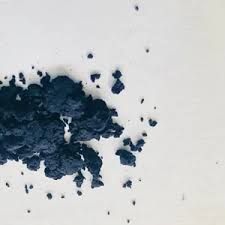best blue natural dye
The Best Blue Natural Dye A Complete Guide
In the world of textiles, colors evoke emotion, capture attention, and express individuality. Among the vast spectrum of colors available, blue holds a special place in our hearts and cultures. Renowned for its calming presence and connection to nature, blue is also one of the most sought-after colors in dyeing. Today, we explore the best blue natural dyes derived from plants and organic materials, Their history, uses, and sustainable impact, and what makes them a favorite among artisanal dyeing enthusiasts and eco-conscious consumers alike.
Historical Significance of Natural Blue Dyes
Blue has a rich history that transcends cultures and epochs. Ancient civilizations were particularly fond of this hue, often associating it with divinity, royalty, and wealth. In ancient Egypt, the use of indigo dyed fabrics signified status and power. The Greeks and Romans also valued blue dyes, using them in their textiles for centuries. However, the most prominent source of blue dyes historically has been indigo, derived from plants of the genus *Indigofera*.
Top Sources of Blue Natural Dyes
1. Indigo The most famous blue dye, indigo, has been used for thousands of years. It can be harvested from various plant species, primarily *Indigofera tinctoria*. The dyeing process involves fermentation of the leaves, which produces a rich, deep blue color. Indigo fabric is cherished for its vibrant shade and unique fading qualities that give textiles a distinctive and appealing look over time.
2. Woad Another significant blue dye source is woad (*Isatis tinctoria*), a plant predominantly found in Europe. Like indigo, woad also requires a fermentation process to produce the dye. Historically, woad was used by the Celts and other European populations before indigo became widely available. Its brilliant sky-blue hue is ideal for softer, pastel fabrics and has made a comeback among natural dyers due to its historic significance and vibrant outcome.
3. Blue Malva The flowers of blue malva (*Malva sylvestris*) yield a soft, delicate blue dye. This plant is easy to grow in home gardens and is a favorite among DIY dyers. The colors produced are beautiful and less intense than indigo or woad, making them perfect for those looking for a more subtle touch in their textiles.
best blue natural dye

4. Alkanet Another lesser-known source is alkanet (*Alkanna tinctoria*). While it is primarily known for producing red and purple shades, it can also yield beautiful blue tones, particularly when processed in different ways. Alkanet is often used in conjunction with other dyes to create a multi-dimensional color palette.
5. Chamomile While commonly recognized for its calming properties as a tea, chamomile flowers (*Matricaria chamomilla*) can also be used to produce gentle blue tones. The dye from chamomile is less commonly used but adds a unique touch to fabric due to its subtle color and herbal aroma during dyeing.
The Benefits of Using Natural Dyes
Natural dyes are gaining popularity not just for their aesthetic appeal but also for their ecological benefits. Unlike synthetic dyes, which often contain harmful chemicals and require vast amounts of water and energy to produce, natural dyes are derived from renewable resources and generally have a lower environmental impact. Additionally, they are biodegradable and non-toxic, making them a safer choice for artists and the environment alike.
The revival of interest in natural dyeing is also linked to the growing trend towards sustainability and mindful consumption. By choosing fabrics dyed with natural materials, consumers support traditional crafts and promote a slower, more conscientious fashion industry.
Conclusion
As we continue to celebrate diversity and creativity in the realm of textiles, natural blue dyes become a beacon of sustainability and history. Whether you’re a passionate dyer, an eco-conscious fashionista, or simply curious about the world of natural colors, exploring blue natural dyes like indigo, woad, blue malva, and others will undoubtedly enrich your understanding and appreciation of this beautiful hue. Embracing these ancient techniques not only honors our past but also inspires future innovations in sustainable living and ethical fashion.
-
The Timeless Art of Denim Indigo Dye
NewsJul.01,2025
-
The Rise of Sulfur Dyed Denim
NewsJul.01,2025
-
The Rich Revival of the Best Indigo Dye
NewsJul.01,2025
-
The Enduring Strength of Sulphur Black
NewsJul.01,2025
-
The Ancient Art of Chinese Indigo Dye
NewsJul.01,2025
-
Industry Power of Indigo
NewsJul.01,2025
-
Black Sulfur is Leading the Next Wave
NewsJul.01,2025

Sulphur Black
1.Name: sulphur black; Sulfur Black; Sulphur Black 1;
2.Structure formula:
3.Molecule formula: C6H4N2O5
4.CAS No.: 1326-82-5
5.HS code: 32041911
6.Product specification:Appearance:black phosphorus flakes; black liquid

Bromo Indigo; Vat Bromo-Indigo; C.I.Vat Blue 5
1.Name: Bromo indigo; Vat bromo-indigo; C.I.Vat blue 5;
2.Structure formula:
3.Molecule formula: C16H6Br4N2O2
4.CAS No.: 2475-31-2
5.HS code: 3204151000 6.Major usage and instruction: Be mainly used to dye cotton fabrics.

Indigo Blue Vat Blue
1.Name: indigo blue,vat blue 1,
2.Structure formula:
3.Molecule formula: C16H10N2O2
4.. CAS No.: 482-89-3
5.Molecule weight: 262.62
6.HS code: 3204151000
7.Major usage and instruction: Be mainly used to dye cotton fabrics.

